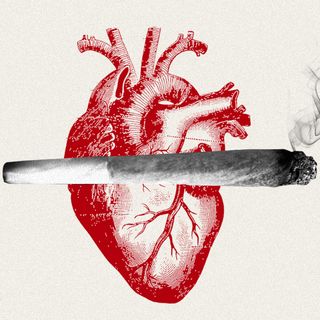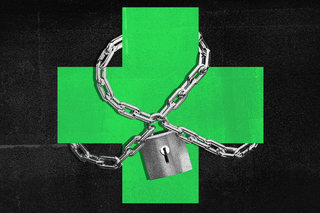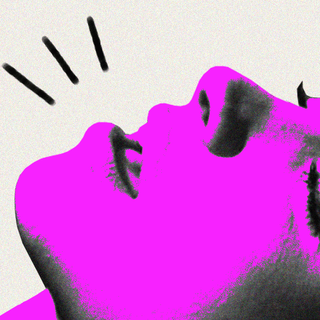
45% of People Who Died in 2020 Had No Medical Care, New Govt Data Shows
While there was a surge in people dying due to lack of medical attention, the number of registered deaths in institutional care decreased.

Here’s a grim statistic: around 45 out of every hundred people whose deaths were registered in 2020 — the first year of the pandemic — died without receiving any medical attention. The number is the highest on record in the country; in 2019, around 34.5% of reported deaths coincided with no medical care. In 2010, the number stood at 10%.
This data was released in the government’s annual report on Vital Statistics of India; using the data from the Civil Registration System (CRS) which records all births, deaths, and stillbirths. The overarching finding is that registered deaths rose by 6.2% in 2020. The first wave of the pandemic cast a sharp light on India’s health infrastructure which has built itself on privatized scaffoldings. It was a crisis that continues to unfold even today in the form of hospital bed shortages, strained healthcare professionals, and deficient insurance policies. That more people died without receiving medical care in 2020 than any other year on recordthen seems to be an absorbable fact.
But the CRS this year carries an important metric — one outlining the extent to which people struggled to access health facilities during Covid19’s first wave. This may be the first statistical glimpse to substantiate, and even validate, accounts of thousands of people whose loved ones died as a result of absent medical care — arguably, many of them preventable if not for a failing medical infrastructure.
It is also true that sometimes, numbers fail and can be misleading in terms of painting an incomplete picture. Some ground rules here are: the CRS shows registered deaths; the actual number could be significantly higher as several reports about India’s pandemic mismanagement show. Secondly, the data doesn’t specify how many of these people had Covid or died due to Covid19; the extra deaths could be due to a volley of reasons — one of which could be health systems overburdened with Covid19 such that other illnesses received scarce attention. Thirdly, the trend of rising deaths is consistent with the pattern over the last decade, the number of births and deaths are being registered more today as opposed to say in the early 2010s.
But data on the absence of medical care remains a revealing indicator nonetheless.
Related on The Swaddle:
‘Survivors’ Guilt’ Is Hitting Covid19 Survivors In India, Complicating Their Grieving
Death records — the numbers, the cause — are a thermometer to gauge a country’s health infrastructure; the pandemic only strengthens their purpose. “…the pandemic has highlighted a longstanding issue: In the world’s second-most populous country, policymakers have historically paid too little attention to tracking people’s deaths, with serious implications for public health,” journalist Disha Shetty noted in Wire Science.
Death registrations are characterized by two types: “in the absence of medical care” and “in institutional care.” The latter includes cases registered only in hospitals and clinics, thereby excluding deaths at home. Interestingly, what the 2020 data tells us is while there was a surge in people dying due to lack of medical attention, the number of registered deaths in institutional care decreased.
There is nothing unnatural about this. “The proportion of deaths in the absence of medical attention has been steadily increasing over the past decade, and the proportion of institutional deaths coming down,” as Amitabh Sinha pointed out in The Indian Express. While the CRS data shows a decline in institutional death over the last few years, it is important to ask who has access to these medical institutions in the first place.
“But due to the pandemic, an unusual acceleration of these trends took place in 2020. These trends are expected to be reinforced in the data for 2021, when a large number of Covid deaths also happened due to lack of access to hospital care,” Sinha added.
This shapes the way the discourse around India’s Covid19 deaths is playing out. The government is fiercely refuting any national and international claims that India is underplaying the Covid19 death toll. The WHO placed estimated mortality due to Covid19 at about 40 lakhs (as of 2021) — about eight times India’s officially reported coronavirus toll of 4,80,000. In this battle over numbers, the government is questioning WHO’s methodology. The CRS data on 2020 deaths comes in this context; according to NITI Aayog member (Health) Dr. V.K. Paul, it can “debunk the allegations that India is massively under-reporting Covid-19 deaths.” But experts argue there remains a concerted effort to hide India’s death toll, anything to make sure the “government looks good.”
As Prabhat Jha, an epidemiologist at the University of Toronto and director of the Center for Global Health Research, said: “Counting the dead helps the living. The main benefit of having data on who dies, and when, is to be able to understand what can be done about it today.”
The number of people who are dying without medical care is the highest ever; to think it only barely covers the true death toll is even more jarring. The numbers reveal more than they say, and can serve as a tangible reminder of the emotional and physical distress of the pandemic. Even beyond, it is a window into understanding the deficiencies of a healthcare system that invisibilizes the “have nots.”
Saumya Kalia is an Associate Editor at The Swaddle. Her journalism and writing explore issues of social justice, digital sub-cultures, media ecosystem, literature, and memory as they cut across socio-cultural periods. You can reach her at @Saumya_Kalia.
Related


How the Female Orgasm May Have Evolved to Help With Mate Selection
